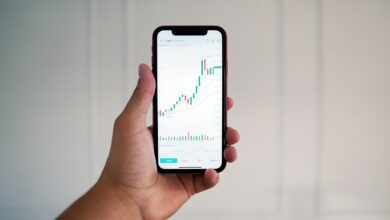Latin American investing – commodity-driven strategies

Allocating capital towards resource-based assets in emerging economies requires precise evaluation of sector-specific dynamics and external vulnerabilities. Energy, metals, and agricultural products dominate export profiles, making portfolio positioning highly sensitive to global supply-demand cycles. Currency volatility linked to commodity price swings intensifies exposure risk, demanding hedging mechanisms or selective asset entry points aligned with fiscal policies.
Demographic trends further influence consumption patterns and labor market evolution, reinforcing demand for infrastructure materials and foodstuffs over the next decade. Integrating macroeconomic indicators with commodity indexes enhances predictive accuracy for returns while mitigating systemic shocks arising from political shifts or trade disruptions. Strategic diversification across subregions with varying natural resource endowments can optimize yield potential without disproportionate concentration risk.
Incorporating real-time data on production outputs, inventory levels, and export volumes provides actionable insights into cyclical turning points. Investors should consider sovereign credit ratings alongside commodity dependency ratios to assess default probabilities under fluctuating price regimes. Adaptive frameworks incorporating scenario analysis enable dynamic rebalancing that aligns exposure limits with evolving market conditions and regulatory environments.
Latin American Investing: Commodity-Driven Approaches
Resource-based assets in this region present unique opportunities due to abundant deposits of minerals such as copper, lithium, and silver. Investors should prioritize portfolios aligned with sectors capitalizing on these materials, considering that demand for battery metals and industrial commodities is projected to rise by over 20% annually through 2030 according to recent forecasts from the International Energy Agency (IEA). Understanding local market dynamics alongside global supply chain shifts can mitigate exposure to currency fluctuations and geopolitical risk.
Currency volatility remains a significant factor impacting returns within the resource extraction industries. For instance, fluctuations of up to 15% against the US dollar have been observed in key nations over the past five years. Hedging mechanisms and diversified asset allocation across multiple jurisdictions can reduce adverse effects on capital deployed. Additionally, demographic trends showing growing urban middle classes fuel domestic consumption of raw materials, indirectly supporting commodity prices and infrastructure development projects.
Technical Evaluation of Resource Allocation
Allocating capital toward mining equities and exchange-traded funds with significant exposure to metal reserves provides targeted access to this sector’s growth potential. Case studies from Chile’s copper mining operations illustrate how technological advances in extraction processes improve yield efficiency by approximately 12%, enhancing profitability margins despite rising operational costs. Meanwhile, lithium projects in Argentina demonstrate scalable output increases driven by automation and improved battery-grade mineral processing.
- Copper: Essential for electrical infrastructure; demand expected to grow due to renewable energy expansion.
- Lithium: Critical for electric vehicle batteries; supply constraints heighten investment appeal.
- Silver: Industrial applications plus store-of-value characteristics offer dual investment angles.
An integrated approach combining physical commodities with blockchain-enabled tracking solutions enhances transparency in supply chains and reduces counterparty risk. Platforms leveraging decentralized ledgers facilitate real-time verification of provenance and compliance with environmental standards, increasingly demanded by institutional investors prioritizing ESG criteria.
The interplay between fiscal policy reforms and regulatory clarity plays a pivotal role in shaping capital inflows into resource sectors. Recent legislative updates targeting taxation regimes aim at stabilizing investor expectations while encouraging sustainable exploitation of natural reserves. Market participants should monitor these developments closely to adjust their portfolio strategies accordingly, balancing short-term disruptions against long-term asset appreciation potential.
A strategic combination of macroeconomic analysis, sector-specific research, and deployment of digital asset technologies positions investors favorably within this resource-rich environment. Decisions grounded in quantitative risk assessment alongside qualitative socio-economic indicators yield balanced portfolios capable of weathering regional uncertainties while capturing value from global commodity cycles.
Identifying Key Commodities in Resource-Rich Regions
Focusing on the primary raw materials that drive regional economic output reveals a clear hierarchy of critical assets. Copper stands out as a pivotal export due to its extensive use in electronics and renewable energy sectors, with countries like Chile and Peru holding over 30% of global reserves combined. The volatility in copper prices requires careful risk assessment, especially given currency fluctuations impacting trade balances. Additionally, agricultural products such as soybeans and coffee play vital roles, supported by evolving demographics that increase domestic consumption while fueling export demand.
Energy resources also demand attention; Brazil’s ethanol production from sugarcane offers an alternative fuel source aligned with environmental policies. Oil remains a cornerstone commodity for nations like Venezuela and Colombia, though political instability introduces elevated sovereign risk factors that investors must consider. Currency depreciation against the U.S. dollar often influences profitability margins within these sectors, necessitating hedging strategies when structuring exposure to extractive industries.
Commodity Profiles and Market Dynamics
Copper’s widespread industrial application is reflected in its demand elasticity related to infrastructure investments across emerging economies. Technical analyses indicate cyclical price patterns influenced by Chinese manufacturing output and American monetary policy shifts. Resource nationalization trends occasionally disrupt supply chains, increasing uncertainty for portfolio managers targeting mining equities or futures contracts within this metal segment.
Agricultural commodities benefit from demographic trends including urbanization and income growth that stimulate protein consumption, thereby boosting soybean meal exports used in animal feed. Seasonal weather variability introduces production risks mitigated through derivatives markets such as futures and options available on major exchanges. Coffee’s niche market exhibits sensitivity to climatic disruptions evident in recent El Niño events impacting yield volumes across key producing zones.
Energy commodity valuation depends heavily on geopolitical developments affecting crude oil supply routes alongside OPEC+ production quotas. Ethanol’s competitive positioning versus fossil fuels correlates with regulatory incentives promoting cleaner alternatives, which could pivot capital flows towards biofuel ventures. Currency depreciation pressures impact input costs for refining operations but may enhance export competitiveness if managed effectively within integrated financial frameworks.
The interplay between resource availability and socio-economic variables frames investment opportunities within this geography’s natural asset sector. Understanding how currency dynamics intersect with commodity price cycles enables better anticipation of cash flow variations tied to export revenues. Integrating macroeconomic data with sector-specific indicators facilitates more robust risk management approaches while capitalizing on favorable demographic shifts enhancing product demand trajectories.
An informed approach to capital allocation requires monitoring regulatory reform agendas aimed at improving transparency in resource extraction industries alongside infrastructure development plans accelerating supply chain efficiencies. Diversification across multiple commodities reduces concentration risk inherent in single-asset exposures affected by localized shocks or policy changes. Forward-looking assessments should incorporate scenario analysis reflecting potential currency devaluations paired with fluctuating global commodity demand influenced by shifting trade alliances and technological adoption rates.
Assessing Geopolitical Risks Impact
Volatility in currency valuations remains a primary concern when allocating capital in regions heavily reliant on natural resources extraction. Fluctuations driven by political instability can erode returns, especially where local currencies face devaluation pressures amid external debt servicing and trade imbalances. For instance, the depreciation of certain South American currencies during periods of social unrest directly affected commodity export revenues, highlighting the necessity for hedging mechanisms and dynamic risk assessment models that incorporate macroeconomic indicators and geopolitical event probabilities.
Resource-rich nations with shifting governance structures often experience disruptions in supply chains and operational continuity. Investors should analyze demographic trends alongside policy changes to anticipate labor market shifts impacting production outputs. Recent case studies demonstrate how population growth rates and urbanization patterns influence domestic consumption and export capacity, thereby affecting commodity pricing dynamics globally. A nuanced understanding of these demographic factors alongside resource distribution enables refined forecasting models crucial for portfolio resilience.
Geopolitical Risk Factors Affecting Investment Outcomes
Political developments such as regulatory reforms, trade embargoes, or nationalization policies significantly alter investment landscapes focused on extractive industries. The intersection of government actions with regional economic dependencies creates layers of uncertainty surrounding contract enforcement and asset security. Technical analysis of historical incident data reveals correlations between election cycles and commodity price volatility, underscoring the importance of scenario-based planning to mitigate exposure.
Incorporating blockchain technology offers transparency improvements in supply chain management within these environments, reducing information asymmetry linked to geopolitical disruptions. Cryptographic verification protocols help secure transaction records against manipulation, fostering trust among stakeholders despite prevailing risks. Consequently, integrating decentralized ledger frameworks into resource trading platforms enhances operational stability while enabling real-time monitoring aligned with evolving political contexts.
Optimizing Portfolio with Commodity Assets
Incorporating natural resource allocations into a diversified portfolio can enhance risk-adjusted returns by mitigating exposure to currency fluctuations and inflationary pressures. Empirical data indicates that commodity-linked holdings, particularly those tied to extractive sectors predominant in the Americas, serve as effective hedges against systemic volatility inherent in equity and fixed-income markets.
Resource-rich regions provide unique opportunities for capital deployment through assets correlated with global supply-demand dynamics of metals, energy, and agricultural products. Leveraging these tangible goods within asset mixes requires careful calibration of geopolitical risks, macroeconomic indicators, and commodity price cycles to optimize long-term wealth preservation and growth.
Integrating Resource-Based Holdings: Technical Considerations
Portfolio construction involving commodities demands assessment beyond nominal price appreciation. Analysts recommend employing multifactor models that incorporate real interest rates, inventory levels, and currency exchange trends–especially USD strength–as these variables significantly influence commodity valuations. For example, copper prices from South American mines often inversely correlate with dollar index movements, suggesting strategic timing for asset entry points.
A balanced approach includes exposure to both physical commodities and related equities such as mining firms or energy producers. This dual-layer positioning allows investors to capitalize on operational leverage while maintaining liquidity advantages. Quantitative backtesting shows that a 10-15% allocation towards resource-linked securities historically reduces overall portfolio drawdowns during inflation spikes without sacrificing yield potential.
- Diversification Impact: Resource assets exhibit low correlation with traditional financial instruments under economic stress scenarios.
- Currency Risk Management: Hedging strategies utilizing derivatives or local currency debt minimize adverse impacts from exchange rate volatility common in emerging markets.
- Commodity Price Drivers: Supply constraints due to regulatory shifts or environmental factors directly affect asset performance metrics.
Case studies from recent years highlight the benefits of dynamic rebalancing based on commodity cycle phases. For instance, during periods of rising global demand for lithium–driven by battery technology advancements–portfolio adjustments favoring South American lithium producers yielded superior alpha compared to static allocations. Conversely, overexposure during oversupply phases led to notable value erosion.
The strategic inclusion of these resources also necessitates vigilance regarding regulatory frameworks affecting extraction rights and export tariffs across jurisdictions. Political instability can exacerbate risk profiles; therefore, active monitoring combined with scenario analysis strengthens decision-making processes related to timing asset entry or exit points.
Synthesizing market signals from global trade flows alongside domestic monetary policy shifts enables refined positioning within portfolios emphasizing raw material holdings. As currency valuations fluctuate relative to commodity prices, deploying algorithmic models aids in dynamically adjusting exposure–thereby preserving capital while capturing upside potential embedded within natural resource markets linked closely to regional economic drivers.
Conclusion: Optimizing Market Cycle Timing in Resource-Based Portfolios
Capital allocation in regions characterized by rich resource endowments requires acute sensitivity to demographic shifts and currency volatility. Empirical data from recent commodity cycles highlights that aligning entry and exit points with macroeconomic indicators–such as population growth rates and real exchange rate adjustments–enhances return profiles while mitigating downside risk.
Portfolio architects should integrate multi-layered analysis encompassing fiscal policy trends, supply chain disruptions, and monetary frameworks to anticipate inflection points. For instance, the appreciation of local currencies against the US dollar has historically signaled contraction phases in extractive asset valuations, suggesting tactical repositioning opportunities before broader market corrections.
Key Technical Insights and Future Outlook
- Demographic Influence: Accelerating urbanization and youthful labor pools in resource-rich territories increase domestic demand for raw materials, supporting mid-to-long-term commodity price resilience despite short-term cyclicality.
- Currency Dynamics: Exchange rate movements directly affect export competitiveness; hedging strategies must account for asymmetric impacts on capital inflows tied to natural resource exports versus diversified economic sectors.
- Volatility Management: Leveraging derivatives based on futures curves can reduce exposure during anticipated downcycles, particularly when inventory builds coincide with weakening currency regimes.
- Technological Integration: Blockchain-enabled transparency tools provide real-time data on supply flows and contract executions, improving timing accuracy beyond traditional lagging indicators.
The evolution of regulatory frameworks within these economies will further influence capital movement patterns. Enhanced governance combined with financial innovation may compress cycle durations but also create arbitrage windows through rapid information dissemination. This necessitates adaptive models incorporating machine learning algorithms capable of processing multifactor inputs including geopolitical risk assessments linked to commodity nationalism tendencies.
Pragmatic application of timing methodologies grounded in fundamental macro variables thus remains paramount for stakeholders targeting resource-dependent assets amid shifting demographic realities and fluctuating currencies. The integration of advanced analytics with nuanced understanding of regional financial ecosystems promises superior positioning ahead of market turning points, enabling refined capital deployment aligned with evolving economic pulses.






